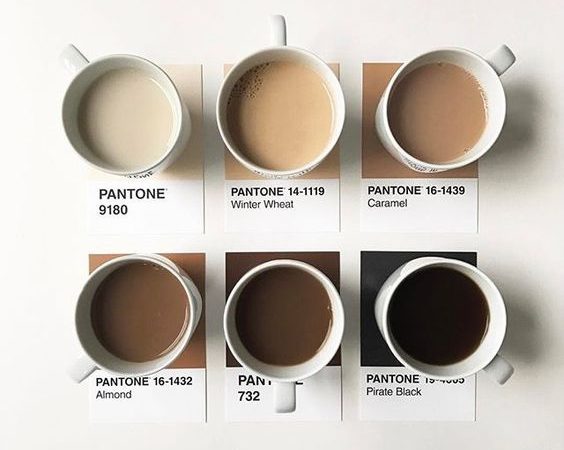In a previous article here on Web Design Ledger, I broke down 20 do’s and don’ts of effective web design and today I would like to keep up with that topic and go over 20 do’s and don’ts of effective web typography. It’s an important part of designing for the web, yet it’s often overlooked (even by me previously). Below are the 20 do’s and don’ts and in the comments section, you’re free to let us know of any of the items we might have missed.
DO NOT use too many different font faces on the page
You may have 1,000+ fonts downloaded on your computer, but when they’re being displayed all on the screen at the same time, you’re not going to have many people impressed. Not only will this cause your website visitors to have a hard time reading, it’s also going to just make you look tacky.

DO NOT switch from serif and sans serif fonts multiple times
Sticking with the theme from above, switching from Serif and Sans Serif fonts multiple times per page will do you more harm than good. Readibility is the #1 thing you need to be worried about with your website, because no matter how “cool” it looks, if the visitor can’t read whats on the page easily, they’re going to leave.

DO NOT ignore planning for font increase by the viewer
Older audiences will adjust the font size view on their screens in their internet browsers settings, so no matter what font you default the text at, it might not be showing this way for the visitor. This can cause errors if you aren’t taking larger fonts into account for headers and other various items which might break the design if they break into two lines.
DO NOT use Sans Serif fonts for large bodies of text
Sans Serif fonts are great for the clean, uniform look – but when you’re putting together large bodies of text (10+ lines), switching your fonts to a serif font will allow for better readability as the curves and shapes help guide the eyes better than the straight, uniform lines of the Sans Serif fonts.

DO NOT overuse font replaces like Cufón and siFr
Cufón and SiFR are just two of the various ways you can replace text in your browser to give off a more custom look, but use it wisely. Using the font replacement for the entire web page is going to be a bit overload and will distract the visitor from the actual reason you’re typing on the page in the first place – you want them to be able to read it. I would advise to generally stick with headings and calls to action for your font replacements and leave the major bodies of text as regular, web safe fonts.
DO NOT overdo the emphasis in your text
A good writer will be able to emphasize the words they want without using bold, italics or underlines. If you’re text is littered with tons of strong and italics and underlines, you might want to rethink what you’re doing. Utilizing the codes to emphesize specific items wisely will make things look – and read – thousands of times better.
DO NOT forget to utilize font stacks in your css codes
When I’m building websites, I tend to like using helvetica for the text of specific items. I realized early on that not a lot of people will have purchased helvetica, so the font won’t display properly on their page if I simple use “font: helvetica;” in my css, so I read up on font stacks and use them religiously now. Basically, it gives you the option to use any font you want, and also allows for back ups in case the visitor doesn’t have the specific font you give first. An example would be like this: “font: Helvetica, Arial, sans-serif”, which basically says that you want the page to display helvetica for the text, and if thats not available on the visitors computer, you want the page to use arial – and if for some reason that isn’t available, it gives a generica sans-serif font.
DO NOT type in all caps – use text-transform when you need it
So, lets just say that you want your headings to all be capitalized – how do you do it? DO YOU EXCESSIVELY TYPE IN ALL CAPS? There are a few problems with that. First, it’s annoying. Second, it’s not easy to edit them out later on if you redesign your site and do not want all caps anymore. So what do you do? Utilize the text-transform css code. Here’s an example.
text-transform: uppercase;DO NOT forget to use accent characters when needed
Typing words like Cufón numerous times on the page without the accent characters will make you look sloppy and uneducated. Yes, it’s true. So utilizing the accent characters will allow you to display the words properly (it’s really polite to do so) and it also is a lot easier than you’d think. You can get a full list of accent characters by visiting this article from w3.org.

DO NOT – I repeat – DO NOT use comic sans or papyrus on anything!
This is actually a rule across all forms of design that use typography – web, print, ect. Never – I repeat – never use comic sans or papyrus on anything. It’s tacky and deserves to be lumped in with IE6 – and we all know how bad people hate IE6, right?

DO use line height to your advantage
Relying on the default line height for your text will bite you in the ass in the long run because it’s honestly just not enough room between lines and will not allow you to work with a proper baseline grid (more on that below). I tend to keep my line height 5-6 px larger than the font size I choose – so if my font size is set to 13px, I will make the line-height 18px.
DO use the proper text colors on the page background
The best thing to do (in my opinion) is to utilize an off-white (#F8F8F8) font on a black background and a dark gray (#252525) font on a white background. It helps the contrast become minimal and doesn’t strain the eyes as much for your visitors when they’re reading your content.

DO use web safe fonts as often as possible
When you’re building your font stacks, make sure you’re using the web safe fonts as much as possible. The fonts that are installed on both PC and MAC can be found by reading this article on ampsoft.net. When you have a knowledge of what web safe fonts are out there, you can better prepare your website for the break down from your original fonts to the fonts that are most common and would be used if the visitor didn’t have your font installed.
DO use a proper hierarchy for your pages
Utilizing a great hierarchy for your web pages will allow your visitors to quickly scan your content and find the most important items. Nothing is worse than getting to a page and having to spend 30-60 seconds looking for the content and finding out what it’s even about. Use proper title tags for the most important sections and smaller title tags for less important sections. You can also use different colors and spacing to vary the hierarchy for your pages.

DO make use of a baseline grid
A consistent vertical grid will help readability for your web page and also increase the visual appeal of the overall design. Proportion and balance shouldn’t be broken by font sizes, so sticking to a proper vertical baseline grid will allow your page to flow naturally from top to bottom as well as from left to right. Acheiving this effect is as simple as these few lines of code below. Notice that the line height for the text is the same size as the margin for the bottom of the paragraph blocks of text (you should also keep this in mind for header tags as well as images).
body {
font-family: Helvetica, Arial, sans-serif;
font-size: 13px;
line-height: 18px;
}
p { margin: 0 0 18px 0; }
DO utilize white space as much as possible
Keeping up with the above do, utilizing white space in your design will help your pages readability. It will allow your page to breathe and give your visitors eyes a rest. Don’t believe me? check out the image below and let me know which item you think is best for readability.

DO keep the use of centered text to a minimum
Centering text is good for one line or maybe a speech bubble in your design, but requiring your visitors to read large blocks of text will cause their eyes to drift and not follow line by line as easily as if the text were aligned to the left or right.

DO use shade variations to help areas stand out more
When designing your next site, keep this in mind – if your body text is black and your sidebar text is a medium gray color, your content will visually stand out and be read faster than the sidebar items. The same goes for blockquotes and other non-essential items that you do not want to take away from the attention of your main content areas.
DO make sure you know about, and use, proper letter spacing for titles
This is an item I didn’t think about very often – until recently. If you are utilizing the text-transform css code I wrote about above, you’re going to notice that the text might be a bit hard to read. Utilizing the letter-spacing property in your css will help curve that problem. There is an example below but please know that the letter spacing is relative to your fonts default letter spacing so it might work differently for various fonts and font sizes.
h1 { text-transform:uppercase; letter-spacing: 1.25em }DO make use of a typographic scale in your css codes
Using a proper typographic scale will allow your page to be read easily by the visitor and will allow you to keep the hierarchy in tact that we spoke about above because if your main text is 12 pixels, then the blockquote and paragraph fonts will be 125% larger by using the 1.25em code in your css. If you properly use a typographic scale, it will actually look like a flieght of stairs – like the image below.

body { font-size: 12px; }
h1 { font-size: 5.0em; }
h2 { font-size: 4.0em; }
h3 { font-size: 3.0em; }
h4 { font-size: 2.0em; }
blockquote { font-size: 1.5em; }
p { font-size: 1.25em; }
input { font-size: 1.0em; }
small { font-size: 0.75em; }
Anything I missed?
Let me know in the comments. I’m ready to learn from you all and I hope you learned a thing or two from me today as well. Thanks for taking the time to read my article and don’t forget to share it with friends through email and social networks if you enjoyed it.





Thanks for the helpful article. These are fundamental principles that are essential to good design. BTW I really love your header thumbnail images. Unique and effective design.
Comic Sans: the bravest of them all!
(cf. CollegeHumor.com’s “Font Conference” vid)
Thanks for excellent article. Very helpful
I disagree on “DO NOT use Sans Serif fonts for large bodies of text”. This decision is dependent on a large number of factors (corporate branding, point size, legibility of chosen font…), and should not be an “absolute” “rule”. Instead, consider your audience and choose appropriately!
A more important consideration IMHO, is to use a font optimised for legibility in body copy and/or screen readability. With projects like Typekit (https://typekit.com) more fonts are becoming available for use on the web but many are not suitable for on-screen use at small point sizes. Choose wisely!!
Amen to the Comic Sans and Papyrus tip.
nice article,
but I don’t aggree on the line-height, you recommend. I use to set the line-height to 150% of the font-size, which works with small and large sizes as well (inside Blocks of text).
greet sven
Good post but you should use % instead of em for font sizes.
Found a blog post which explains why (not my blog) https://www.kyleschaeffer.com/best-practices/css-font-size-em-vs-px-vs-pt-vs/
Good to see such useful articles. Very helpful. Thank You.
As Hutch says, the choice between Serifs and Sans serifs for body text is dependent on a lot of things.
What is said about the Serifs’ ability to guide the eye is true for print. On a screen, in small sizes, the opposite is more often true. The serifs tend to distort the letter forms (because of the low resolution) and clearer Sans serifs such as Verdana is much more readable.
However, with higher resolutions and larger font sizes, Serifs will play a more important role.
Useful tips, thanks for sharing.
You forgot: NOT TO USE Small Caps!! It looks horrible on websites
Michael
Have you used typekit which is a great site that has just come out of beta for fonts. I really like it.
Yup… useful tips, thanks.
Always use “etc.” (et cetera) rather than “ect.” (ectoplasm).
Great article. It’s nice to see a reminder about good typography on the web, it’s seems to got forgotten more often then it should.
I do have to disagree with you on the point about using sans serif for long blocks of text. Many studies have been done on this. They have shown that younger people who have grown up seeing much more sans serif typography can read long blocks of sans serif type as easily as reading serifs.
I think the typeface should be suitable to your design. Whether it be serif or sans serif.
Some great tips, thanks for the post
I do not understand about it. Hmmm…i have to more learning…;;)
Thanks for this helpful article!
Really helpful post, i agree that using too many different fonts on a page will make it look tacky, and hard to read.
Thanks.
Great article, but I disagree with the use of Comic Sans. (J/K) Check this out.
https://designinformer.com/comic-sans-history-examples-best-practices/
lay off comic sans, it never meant to hurt anyone
It’s been bastardized by both the pretentious and the innocents
eh papyrus does just look bad, not my dish
Good article, but I disagree with the following:
“DO NOT ignore planning for font increase by the viewer”
I think this rule is largely outdated since most browsers now zoom the entire page, not just the font. Unless you are using tables for everything it is almost impossible to design for any font size, it will almost always break your design.
Very useful tips…thanks for sharing.
It’s funny that this page’s layout breaks the first few rules… (1,2,4)
I noticed the same thing! I guess rules were made to be broken…
Nice article… with this i´ll update my own article with a few more ideas with what you wrote here! ty
Excellent work, Mike. Lots of great tips and pointers.
very helpful
I disagree with the rule that serif & sans-serif shouldn’t be mixed. A List Apart uses a mix of Georgia and Verdana to create contrast — and surely you appreciate their typographic sense, because you’re using them as an example of another one of your rules.
Interestingly enough, Jason Santa Maria recently published an article on A List Apart wherein he actually *suggests* pairing serif with sans-serif typefaces:
“One of the easiest ways to quickly create balance and contrast in typography is to choose a serif and sans serif pairing. It’s a simple, easily managed combination that can produce a cohesive look to the text if you select the right typefaces.”
all good. However, I did use Papyrus once to good effect. (only once) -dp
So did I – the site owner specified it!
It actually looked ok, but many machines I checked it on didn’t have it.
She’s since had the site re-designed . . .
Thank you very much for your coverage over web designing.
Good thought-provoking post, with some reminders of what not to do…
Though I agree with Kyle – with a little elegant execution sans and sans serif can work together – ALA being a great example.
That’s quite true in print, but numerous usability studies have determined the opposite for screen reading. Serifs can become blocky, pixelated, and more difficult to read depending on the display device and its anti-aliasing capabilities and algorithms.
I also notice you aren’t taking your own advice; your story is set in san serif.
Re: emphasis – don’t use underlines at all.
It looks too much like a dud link.
Papyrus is the bomb!! not sure what the big deal is.. Oh wait… hahahaha
great article, everyone should read this, print it out, and post it next to their monitor.
DO NOT forget to use accent characters when needed.
Typing words like Cufón numerous times on the page without the accent characters will make you look sloppy and uneducated
It is not about displaying. It’s about language. Accents (and all diacritics) are part of the words. It’s not a question of forgetting, It means you know how to write in the language you are writing.
So, the tip could be
“Do not forget to write ‘w’ in words like ‘whisky'”
I totally agree with you. Typography is growing in importance and know how use is essential for webdesigner.
Comic Sans has its place (and so does Papyrus). It’s important not to stress that people should never use it, because then they latch onto that idea and lose all sense of propriety. Just tell them gently that THEY shouldn’t use it because they don’t know how.
I’ve been through the list, and I can safely say I’ve ticked all the boxes (except for use em’s – need to look into this :-))
Thanks for this! 🙂
Hi,
These are really very beautiful text presentation techniques. And more helpful for us, now we can make a new stylish designs.
Thanks
Ishaq Chughtai
That’s a great article. Thanks for it.
Amen to the Comic Sans and Papyrus. I had client I designed a site for with a previous employer and she wanted all the content on the site to be Papyrus. I tried to convincer her otherwise. She insisted I had to use Papyrus and I think I cried through the whole process.
I agree with you on most of this stuff, but re sans-serif in the body, I have to go with Martin and Pariah. Most serif fonts do not translate well to the screen except at large sizes as far as readability goes. The web is not print. Screens are light based, pages are not; and furthermore, print is generally 300 dpi, your computer monitor is a fraction of that.
DON’T use and apostrophe in the word ‘dos’.
Title should be Dos and Don’ts.
DO NOT take any of the above “Do nots” to seriously or religiously.
Especialy the one about a whole page of cufon distracting a viewer…That would totally depend what font you used..And the always use websafe fonts for body text and then promoting font stacks.
Another thing, if you add 5-6 pixels to your font size to get line height you will never keep a consistent baseline grid as larger font sizes would mean larger line heights. not that that’s wrong of course…you just can’t have both.
Great post. Agree with pretty much all your advice. I really need to improve my typography skills…
Excellent stuff!
very useful. thanks for the tips, mike! 🙂
Part of readability is using the simplest, clearest words possible to get your point across, and a particular pet peeve of mine is overly formal language – especially the word ‘utilize.’ Lots of folks think it’s a more elegant way of saying ‘use’ – and that using bigger words when smaller words will do makes them sound better-educated.
Two things:
1. The reverse is actually true: Using smaller words instead of bigger words shows you have a command of your subject and you respect your audience. Think of your favorite profs in university – they often used very conversational language to get their point across.
2. I just found this out a couple years ago: ‘Utilize’ does NOT mean ‘use.’ At all! It means ‘use in a new (in the sense of being pretty unusual, furthermore) way.’ As in, “She was so fixated on keeping her hair dry in the rain, she utilized *the toxic-waste bin* as a hat!”
thanks nice ….. i learned a lot.. by proper spacing.. and height.. and proper typeface…really thanks cheers..
-joseph
Great post, some really good tips for people to follow… I remember probably more than ten years ago we used to comment on artwork we received that used comic sans looked awful 99% of the time.
Thanks. I learned a lot from this.
Thanks for the great article. I am trying to focus on typography for my website, and had a fast question. Do you have a font size scale that you use? Or due you use a different scale for each project?
Thanks,
KC
One thing to add to the “DO NOT type in all caps” rule is that it’s also better for *accessibility* to not do that. E.g. if you write “HELLO”, some screenreaders will read each letter separately (“H-E-L-L-O”), but if you use text-transform instead, it becomes the intended “Hello”.
BTW, you broke that rule in that very sentence… “DO NOT”… 😉